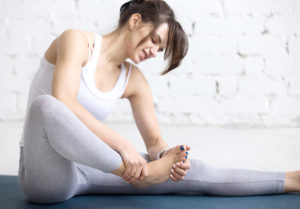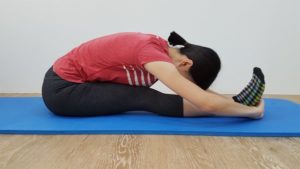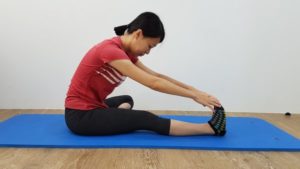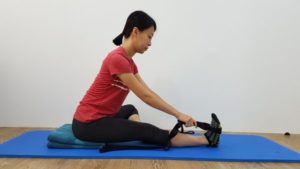Is it normal to have pain in yoga?
 While some hold the belief of “No pain no gain”, when experiencing discomfort, it is important for yogis to be able to differentiate between the good and bad pain. Good pain includes the feeling of tightness while stretching and muscle soreness which usually presents 24 to 72 hours after practising yoga. Good pain is usually short-lived and will gradually disappear. On the other hand, bad pain includes sharp pain or a feeling of numbness. It may indicate an underlying injury, for instance, muscles strain, ligaments sprain or other structural damage. A bad pain signals you to stop putting yourself in danger. However, it does not means that you need to stop practising yoga at all.
While some hold the belief of “No pain no gain”, when experiencing discomfort, it is important for yogis to be able to differentiate between the good and bad pain. Good pain includes the feeling of tightness while stretching and muscle soreness which usually presents 24 to 72 hours after practising yoga. Good pain is usually short-lived and will gradually disappear. On the other hand, bad pain includes sharp pain or a feeling of numbness. It may indicate an underlying injury, for instance, muscles strain, ligaments sprain or other structural damage. A bad pain signals you to stop putting yourself in danger. However, it does not means that you need to stop practising yoga at all.
Although not all of us have an excellent strength and flexibility, almost everyone can perform a yoga pose with some kind of modifications and with the help of props. Take single leg forward fold as an example, Figure 1 shows the standard pose. The primary aim of this pose is to stretch the back of your leg, especially the hamstring muscle. Instead of forcing yourself to get into the standard pose with a rounded back (Figure 2), which may actually cause unwanted stress in your lower back, you can try the modified version (Figure 3) which serves the same purpose.
Figure 1: Standard pose which the back is flat and the pelvis is tilted forward
Figure 2: Common faulty posture when trying to reach the toes with a rounded back and a backward tilted pelvis
Figure 3: Sit on blankets or towels which make it easier for you to rotate your pelvis forward and to keep your back flat. Use a yoga rope around your foot if you have difficulty reaching your toes. You should be able to feel a good stretch over the back of your leg without any discomfort in your back.
Breathing is also an essential part of yoga. Performing slow and deep breathing reduces stress and tension in your body which makes getting into a yoga pose easier. While holding in a pose, breathing helps to relax and lengthen the muscles further and you may be able to go deeper into the pose. Always be mindful when practising yoga. Listen to your body especially when you encounter a “bad pain”.
Don’t hesitate to contact us at Intouch if you need help on yoga injuries, advice on modifications for different poses or how to perform yoga safely. Don’t forget to check out our Hip Opening Sequence for Pain-free Yoga Practice
Written and exercise demo by Yi Jing, Physiotherapist, In Touch Physio
Read more on:
Pilates or Yoga – which one would be best for my injury recovery?



